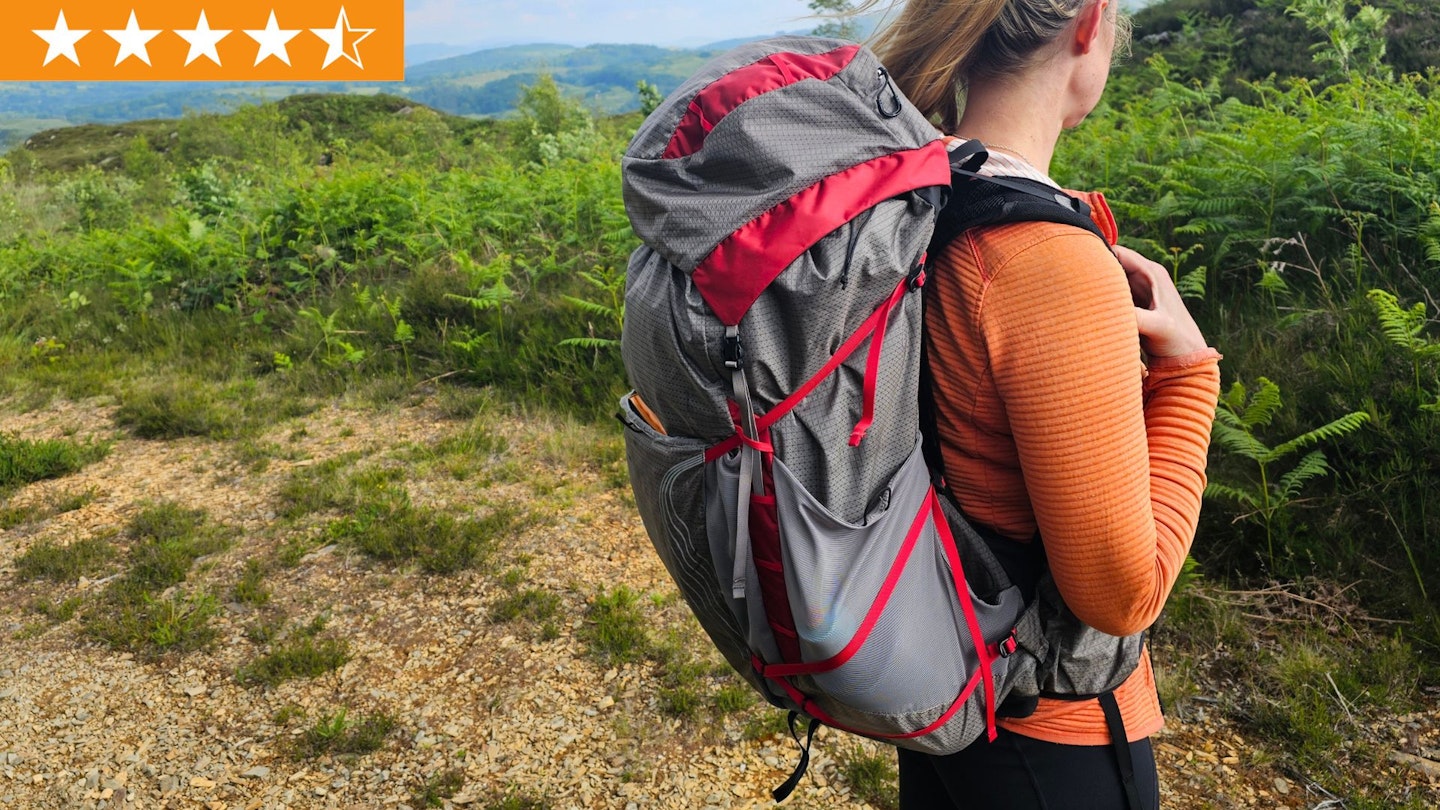Meet the winner for 'best backpack' in our Trail Gear of the Year 2025 awards!
Osprey is one of the market leaders in trekking and hiking rucksacks, and perhaps the most recognised pack brand around. Its Eja model – or men’s Exos – are perennial favourites amongst lightweight backpackers.
They were first launched back in 2009 before being redeveloped in 2014 with the now-familiar Exoform harness and Airspeed suspended back system. They’ve been part of the Osprey line-up ever since, with successive generations being continually tweaked. Why their enduring popularity? Well, the Exos and Eja series give you almost all the features and carrying comfort that are associated with Osprey backpacking rucksacks, but with reduced weight.
Having said that, in 2018, Osprey went even lighter, introducing the featherweight men’s Levity and women’s Lumina, in both 45- and 60-litre volumes. These packs weighed less than a kilo, but still featured full internal frames and trampoline back panels. Otherwise, features were pared back to a minimum: no hipbelt pockets, minimal harness padding and ultralight fabrics.
The newest Eja Pro and Exos Pro 55 packs, launched in the UK in late 2023, might just strike the perfect balance. They sit somewhere between these two models – still extremely light (at just 930g and 980g respectively), just like the original Levity/Lumina, but with more of the practicality and trail-friendly features of the standard Eja and Exos.
 LFTO
LFTOwww.osprey.com
Pros
- Impressively lightweight
- Excellent fit
- Back system has great ventilation
- Durable for a lightweight pack
Cons
- Lacks some features
| Weight | 830g (Eja Pro 55) | 870g (Exos Pro 55) |
| Volumes | 55L |
| Materials | NanoFly 100D Nylon x 200D UHMWPE ripstop w/ PFC-free DWR |
| Sizes | XS/S, M/L (Eja Pro 55) | S/M, L/XL (Exos Pro 55) |
Design and features

Osprey have taken the standard Exos/Eja packs and worked hard to cut weight without causing performance issues. This has meant eliminating some of the pockets, using thinner fabrics and streamlining the suspension. The result is a pack that looks and feels like the more deluxe gear-haulers in the Osprey range, while weighing in at less than 1kg.
It’s still a traditional top loader with a floating, double buckle lid. The main body of the pack is accessed under the lid, which closes with a drawcord collar and internal top compression. Inside, there’s a hydration sleeve and exit port (though frustratingly, the hanging loop is designed for use with Osprey’s own Hydraulics reservoirs. If you don’t have one, it’s difficult to keep your water bladder suspended).

The main compartment accommodates plenty of kit, and the curvature of the back panel is less extreme than some Osprey packs, so it doesn’t intrude noticeably on the internal volume. To a certain extent, the pack is also strippable, as in common with many other Osprey packs, it has a removable lid with a FlapJacket top cover to give some added protection to the top drawcord closure. For us, the additional capacity and organisation meant the lid was well worth the extra weight, which made the flap redundant. In fact, it would be good if the flap itself were removable too, not just the lid.
The outside of the pack has side compression webbing and attachment loops for trekking poles. Various external gear loops also provide places to lash kit or attach gear with mini carabiners. The main body of the pack is made of the brand’s NanoFly fabric, a 100D Nylon x 200D UHMWPE (Ultra-High Molecular Weight Polyethylene), finished with a PFC-free DWR treatment. It’s a much lighter fabric than is typically found in most trekking packs, but has a very high strength-to-weight ratio.
Harness and back system
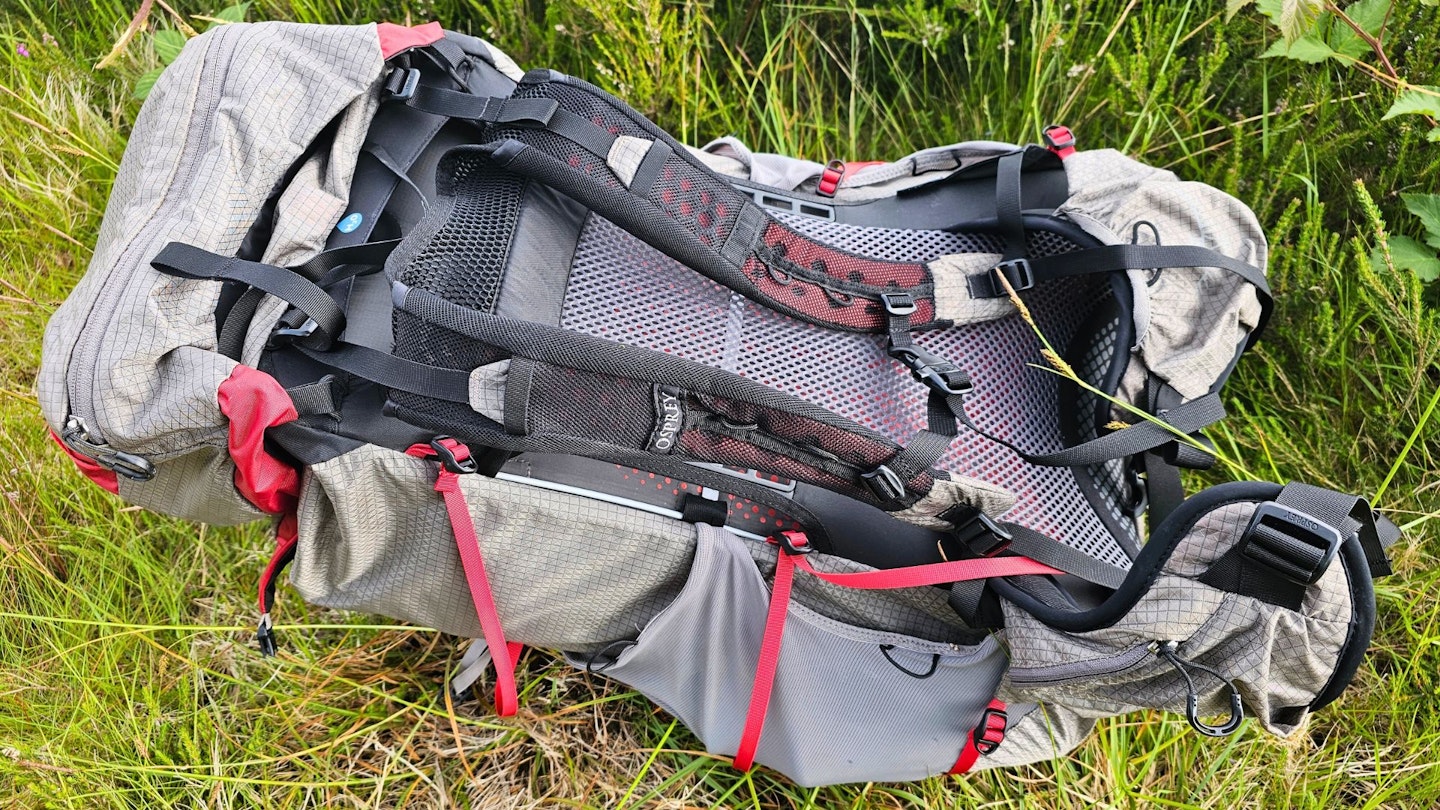
When it comes to fit, The Exos Pro and Eja Pro 55 are available in two different back lengths for men and women respectively. The packs themselves also boast gender-specific fits, with ergonomically sculpted shoulder straps and hipbelts. In addition, there are plenty of other adjustment points to make sure the pack is the optimum fit, with adjustable load lifters, shoulder straps and chest strap.
The pack also has an adjustable back system to further fine-tune the fit. It’s super easy to do, via two cylinder-shaped plastic toggles that can be moved to different levels on a ladder-type insert on the back panel. That said, they don’t seem as secure as they could be. On test we did once accidentally manage to detach one, which made for a weird couple of hours of carrying the pack, but it can probably be put down to user error.
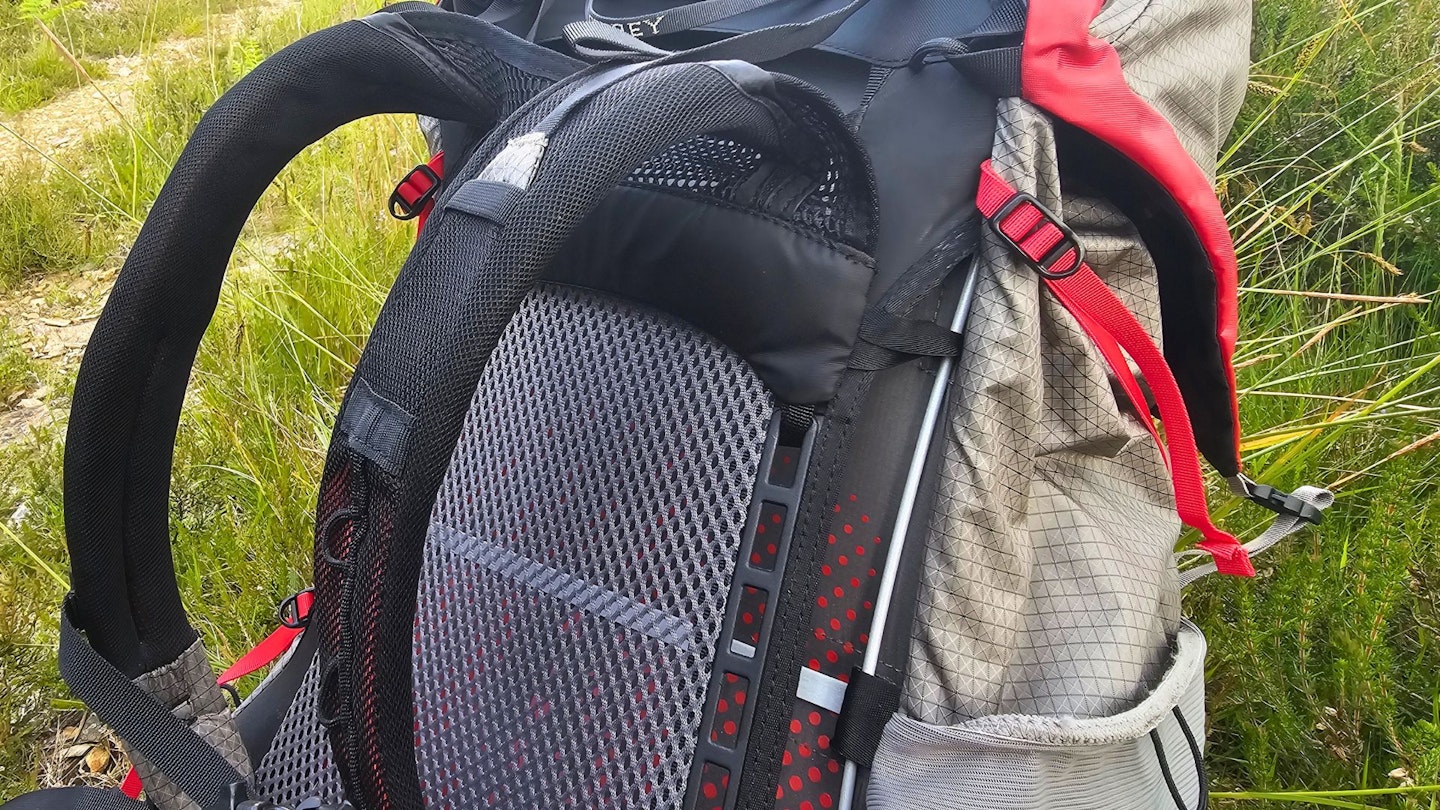
All the packs feature a suspended-mesh, trampoline-style Airspeed system, delivering plenty of airflow, combined with padded, ergonomically sculpted shoulder straps and low-profile hip fins. The latter aren’t as comfortable as the wraparound hipbelts of Osprey’s bigger trekking packs but are still supportive enough to handle lightweight and mid-range backpacking setups, providing decent weight transfer and good load stability. The pack’s perimeter alloy frame adds further rigidity to help carry reasonable loads in comfort.
Pockets and storage
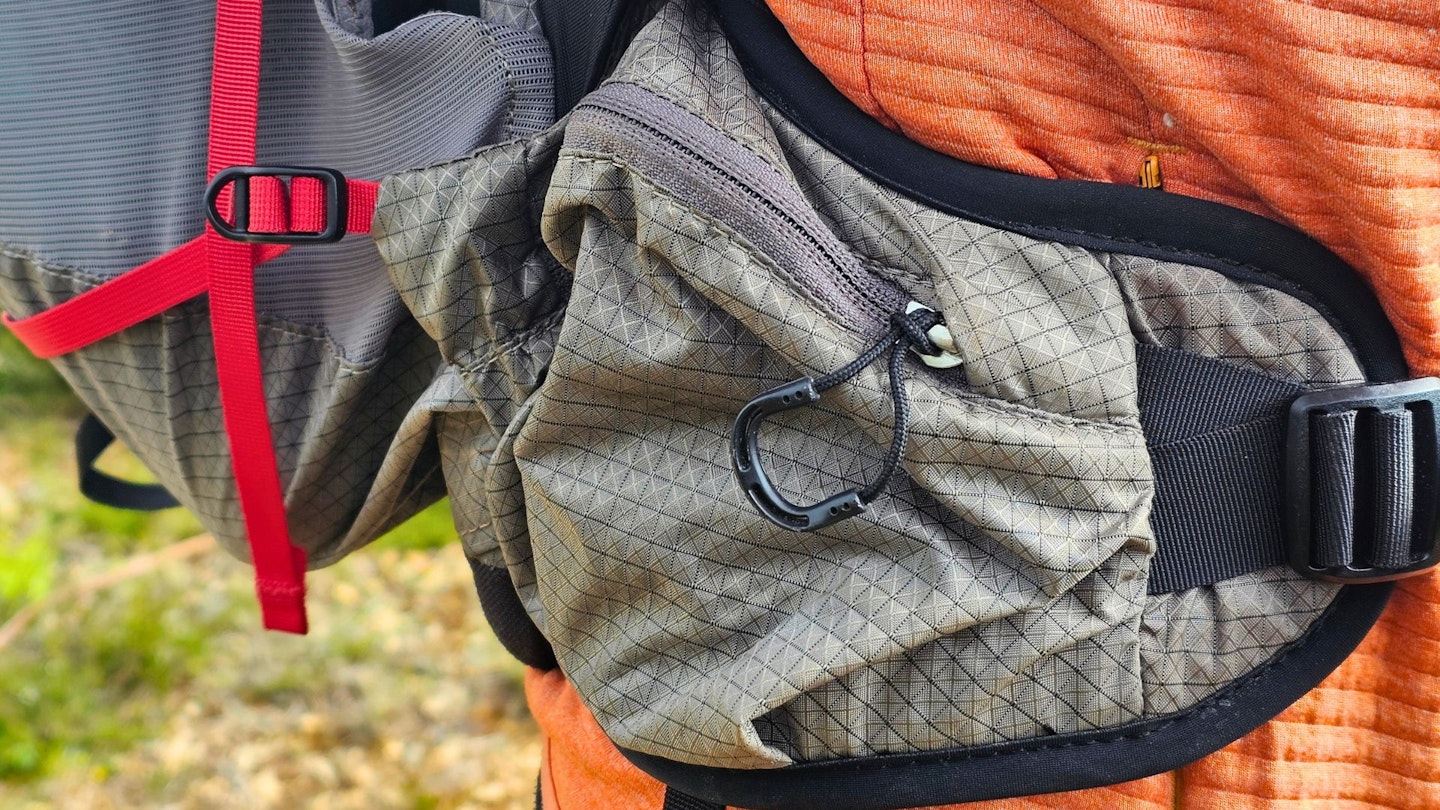
The pack has roomy side pockets, a front stretch shove-it pocket and a floating, twin-buckle lid with a capacious outer zipped pocket. We did miss an inner lid pocket, but for the weight of the pack you can understand why there isn’t one included. Side pockets are big enough to stow a tent or large water bottle, and remain accessible both from the top and side, so that you can easily grab your water bottle while wearing the pack.
There’s a decent sized front panel pocket, which while not nearly as stretchy as the side pockets can still easily accommodate wet weather gear. Expect to do some wriggling to get kit in and out, but it is still a useful extra pocket to have.
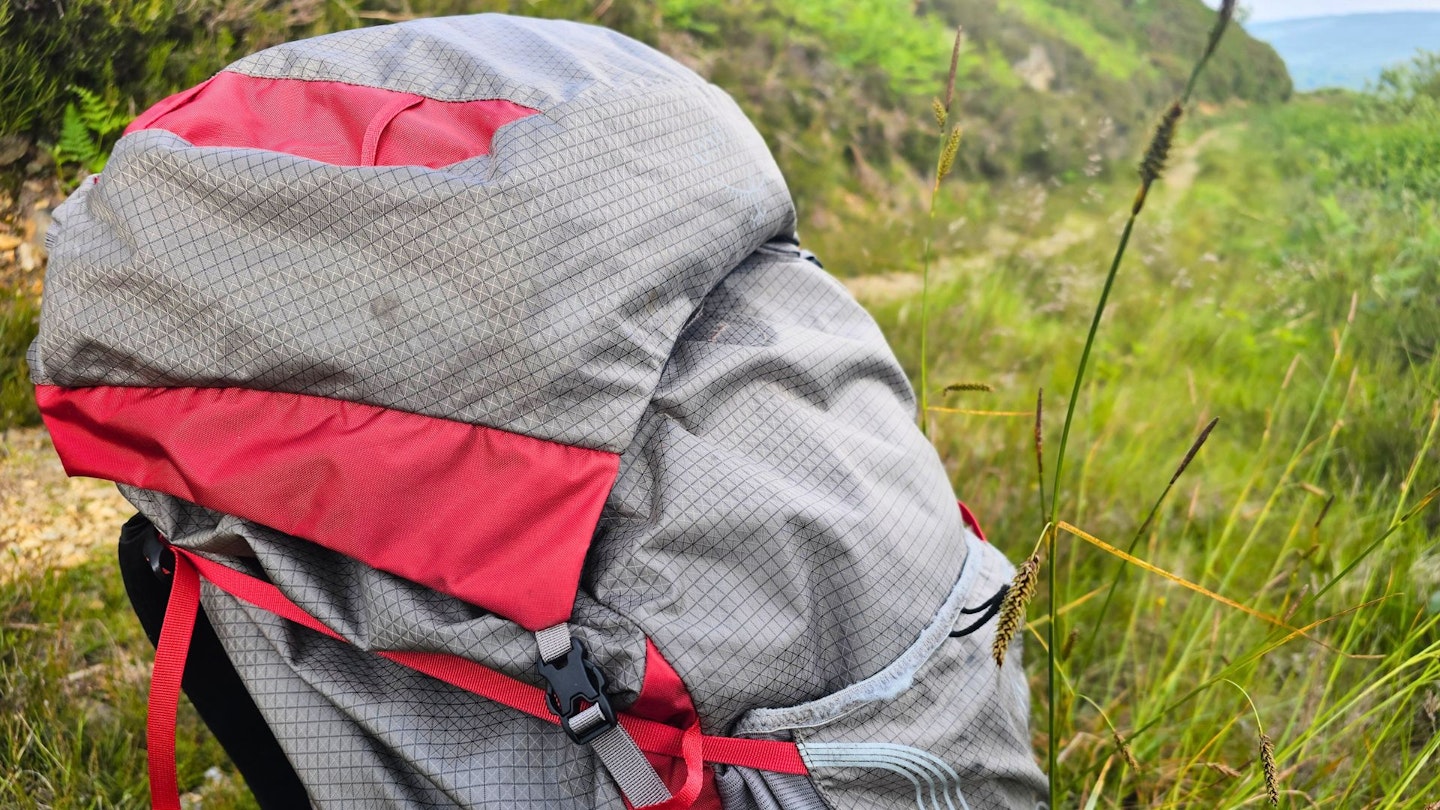
A couple of the design decisions here seem a little eccentric though. The compression straps cover not just the body of the backpack but the front and side pockets too, which admittedly means that you can keep your pack nice and neat. But it also means that you need to loosen them off fully if you want to store anything bulky in those pockets. On older Osprey packs you could re-route the compression straps inside the side pockets to get around this, but that feature has sadly been eliminated.
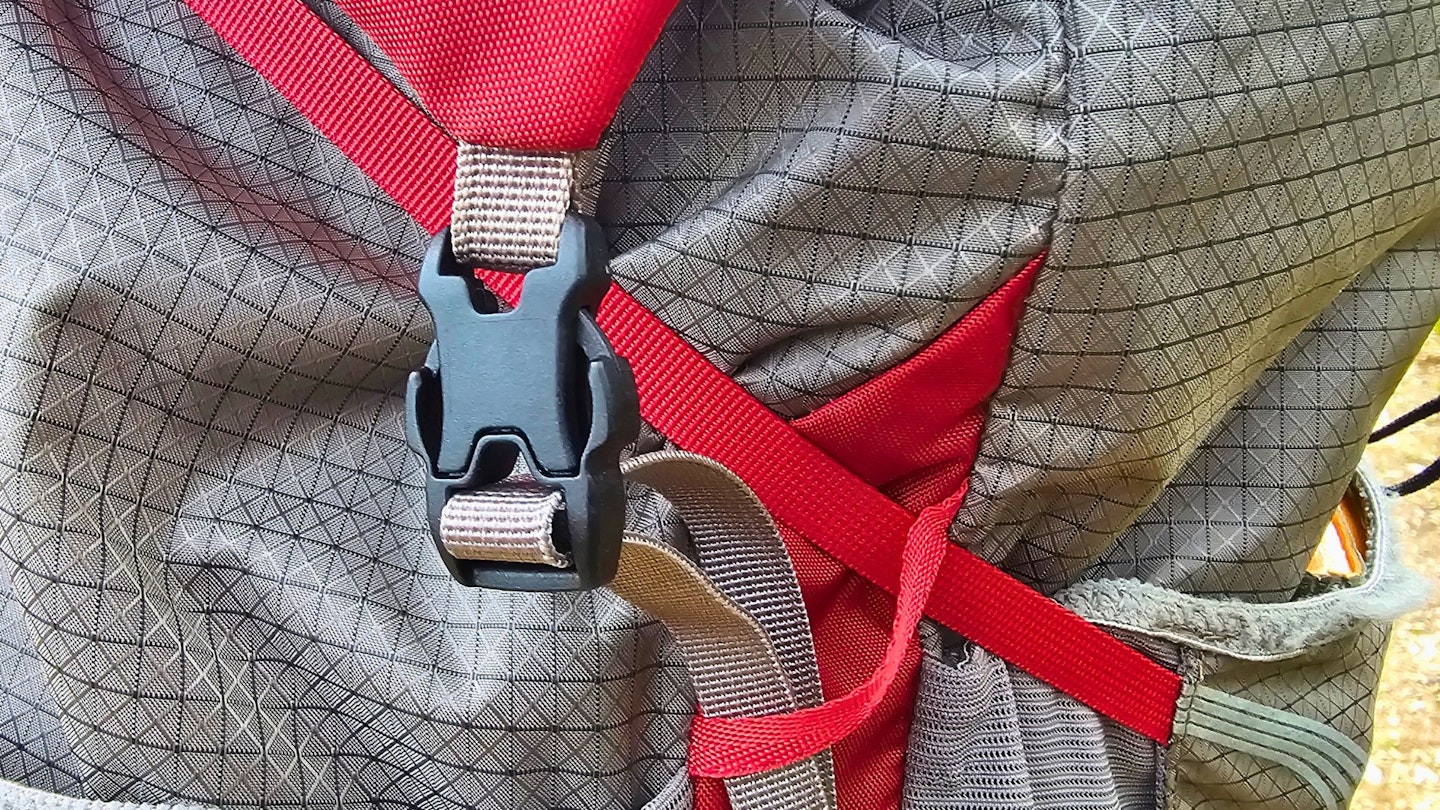
On the other hand, unlike the Lumina and earlier models of the standard Eja, the Eja Pro has two hip belt pockets, which are super handy. One is zippered, the other is elastic-bound. Both are quite small so don’t expect to be stashing your phone in there, but they are ideal for snacks, lip balm and other little items that you want to keep close to hand.
Performance and comfort
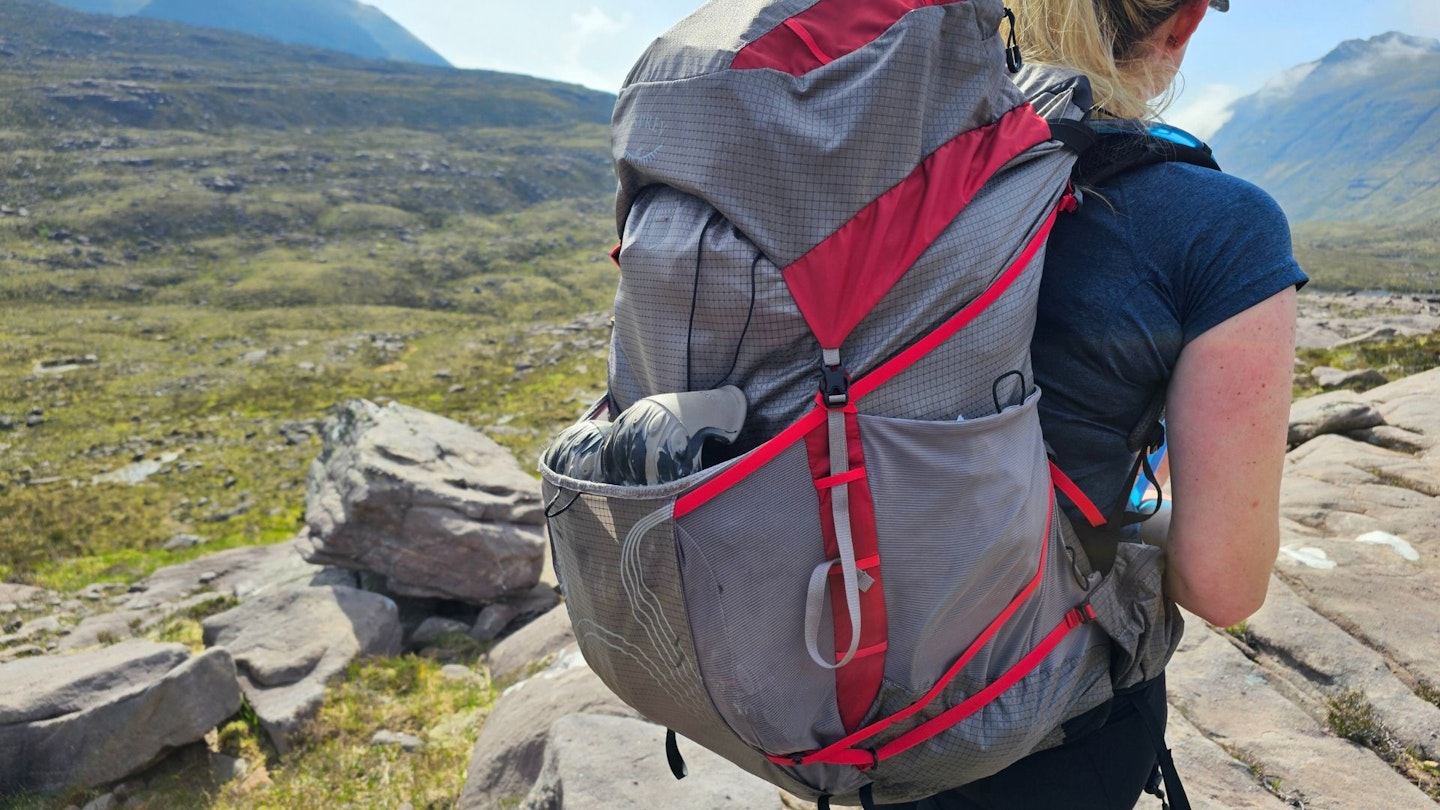
The hipbelt has minimal padding but wasn’t uncomfortable carrying a 12.5kg load on the Cape Wrath Trail. It’s also easy to adjust and doesn’t slip, unlike some. The shoulder straps are reasonably well padded, but we still experienced some tenderness around the collarbones towards the start of the trip. Overall, however, it was comfortable enough not to wince when shouldering the pack.
The Airspeed suspension does a good job of promoting airflow to your back despite high temps, but we did get noticeably sweaty under the webbing of the hip belt. On the other hand, since the pack sits relatively close to your back there wasn’t any extreme movement when crossing tricky terrain, so it never felt unstable.
Note that the pack doesn’t come with a rain cover, presumably to cut weight. You can purchase an Osprey rain cover separately – or use dry bags and/or a pack liner to keep your gear dry.
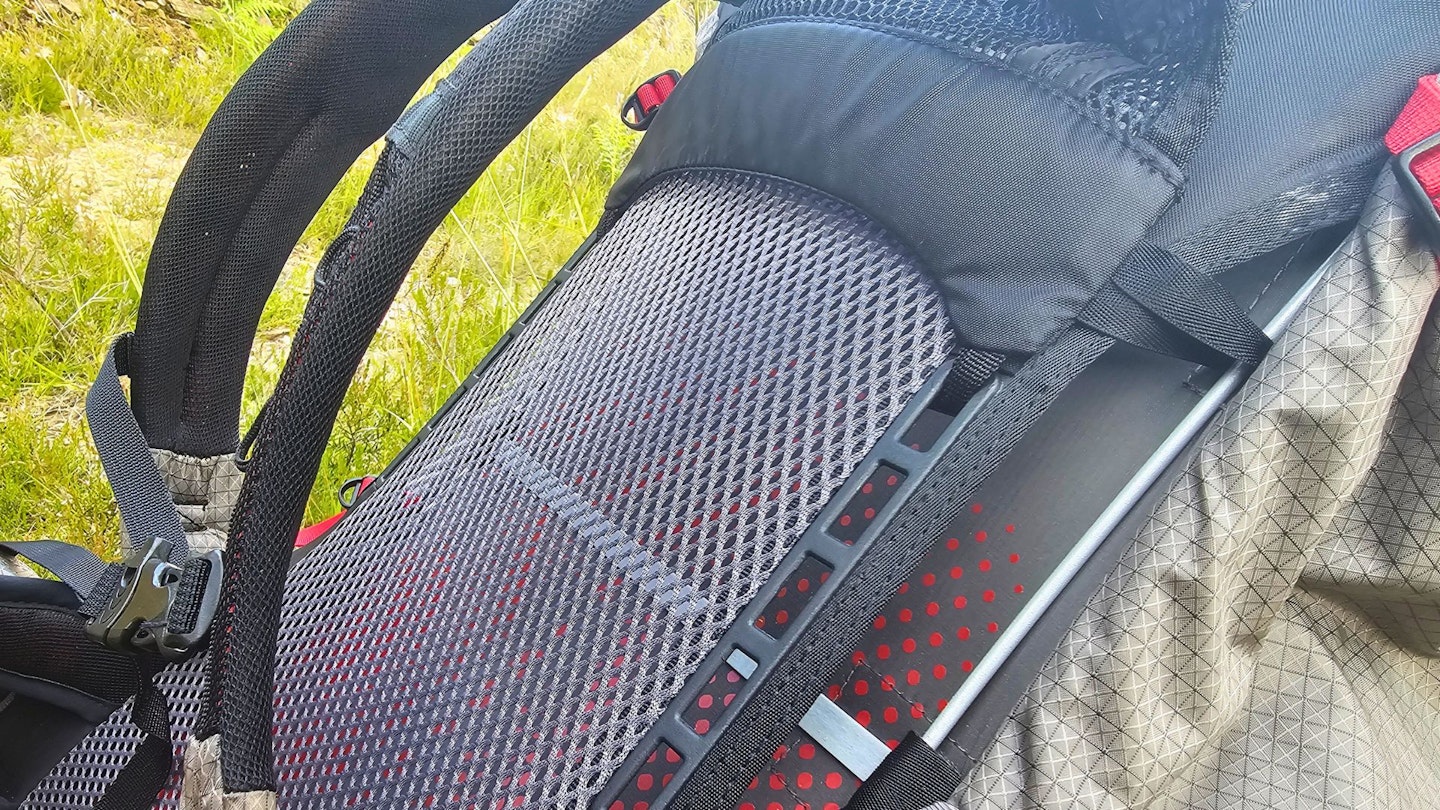
Overall, we were impressed with the Eja Pro’s durability. Even after 17 days on the trail, despite using such lightweight fabrics, the pack demonstrated very little signs of wear and tear, with just some slight pulling on the elastic binding of the front and side pockets.
As well as being surprisingly tough, it’s far more functional, comfortable and better ventilated than most other ultralight packs we’ve tested.
Sustainability
Osprey has made big strides in sustainability in recent years. Alas, the ultralight technical fabrics used to build the Exos and Eja Pro do not yet incorporate any recycled material – but they are completely PFC-free.
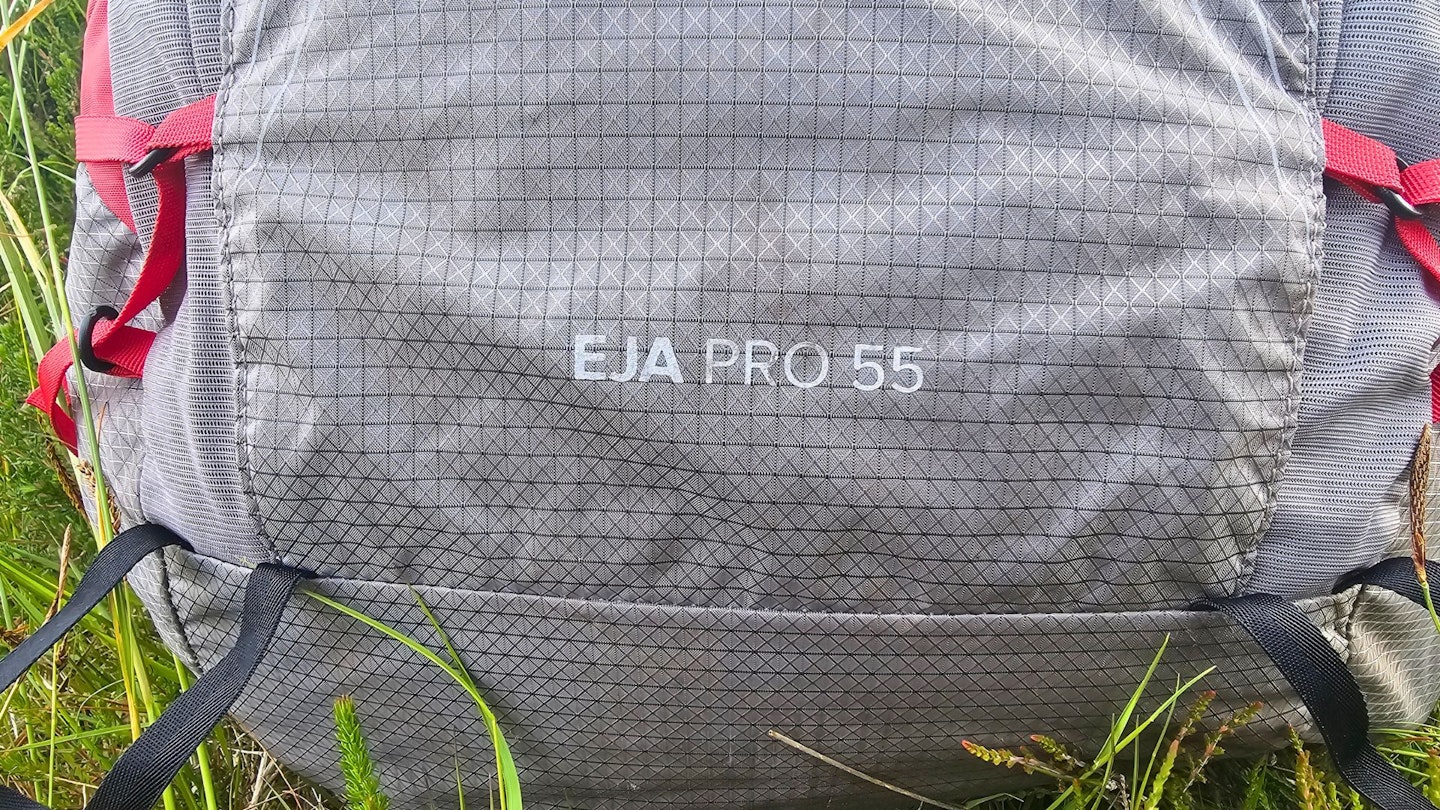
However, when it comes to social responsibility, all Osprey manufacturing facilities have a factory code of conduct and use third-party auditing to confirm compliance.
The brand’s All Mighty Guarantee also focuses on sustainability through product longevity. Osprey states it will repair or replace packs free of charge, regardless of how old the product is. In our experience, it’s one of the outdoor industry’s best brands for warranty and customer service – indeed, it’s a big reason for Osprey’s impressive customer loyalty.
Price and competition
With an RRP of £240, this is a premium pack. That’s the same price as the Deuter Aircontact Ultra 50+5, which is broadly comparable in terms of design and features. However, on balance we reckon the Osprey is a superior choice for most users, with a more advanced back system and tougher fabrics, whilst still being a fair bit lighter.
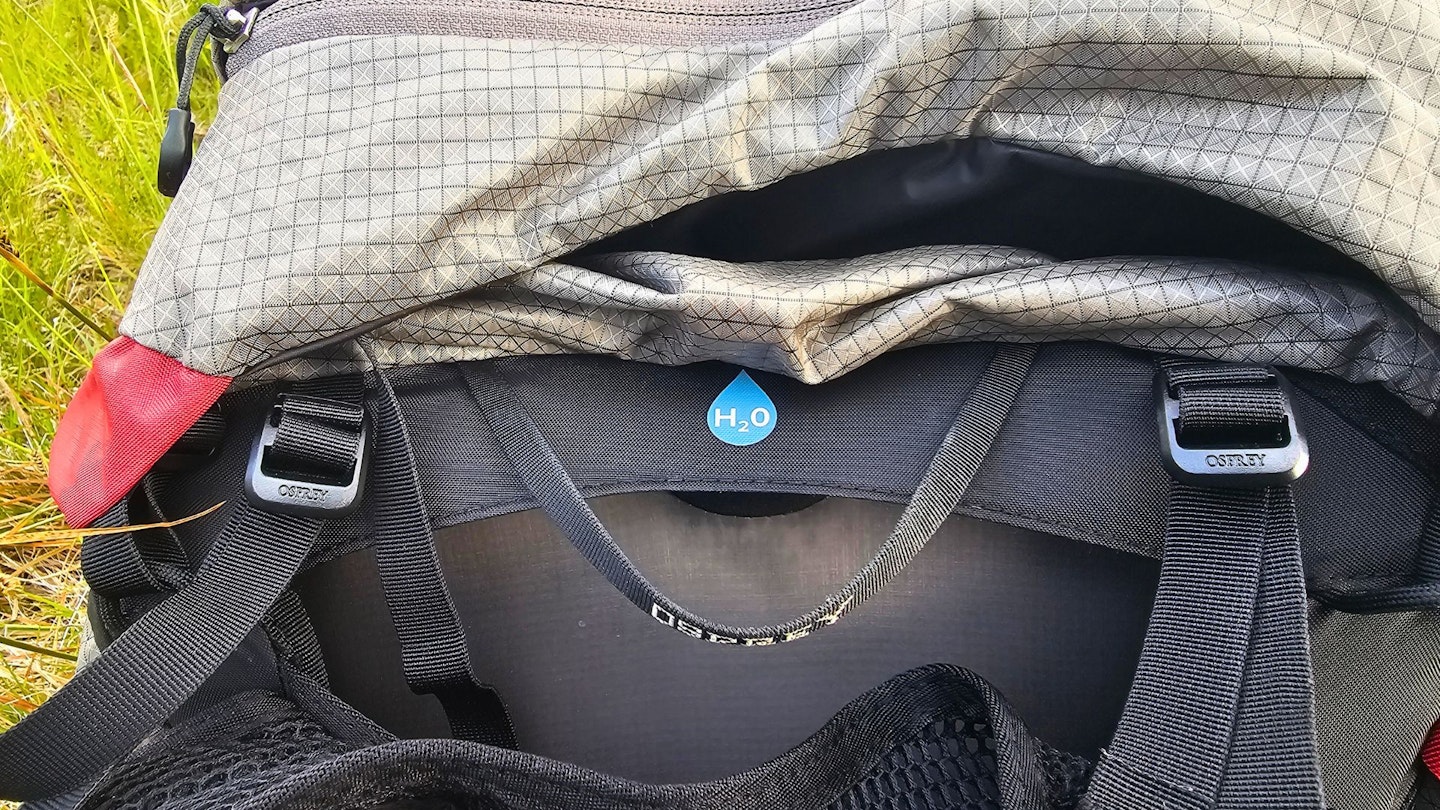
If you’re prepared to move away from a fully framed design, the options suddenly open up hugely, including the Exped Lightning and genuine ultralight packs like the Atom Packs Atom+. If you’re prepared to import from the US, you could also look at ultralight cottage brands like ZPacks, Hyperlite, Gossamer Gear and Dan Durston. That approach represents a fundamental shift in attitude when it comes to backpacking though – get ready to start counting every gram (and spending lots of money).
You’ll also need to be prepared to lose some creature comforts like the Osprey Airspeed suspended mesh back panel and the convenience of a lid. That might be a step too far for many backpackers, especially if you’re used to these types of packs.
Verdict

The Osprey Eja/Exos Pro 55 is a great pack that delivers Osprey’s trademark fit, ventilation and build quality in an impressively lightweight and streamlined package.
How we tested
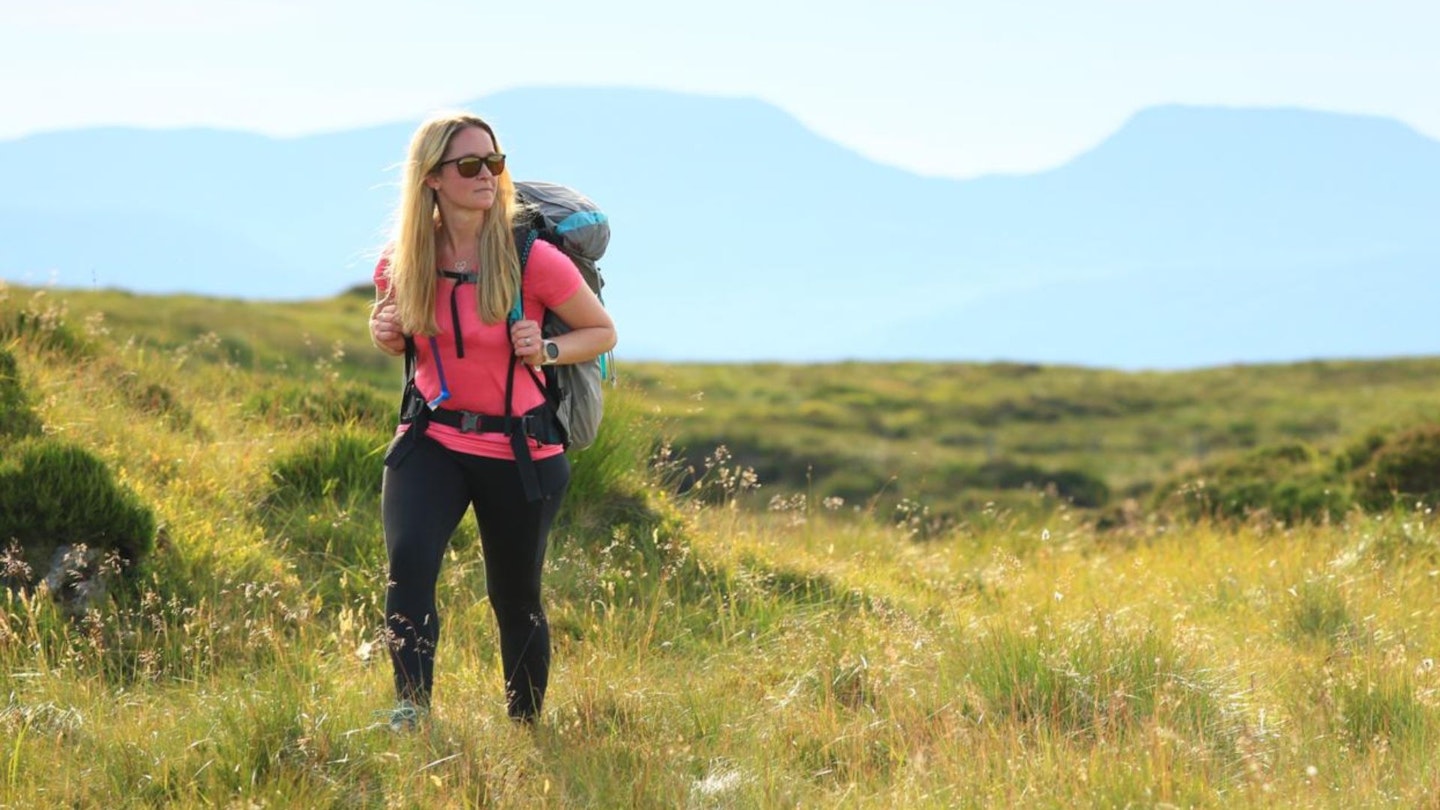
This Osprey Eja Pro 55 review was written by Matt Jones, based on the testing of Ellie Clewlow. Ellie used the Eja Pro 55 on the Cape Wrath Trail over 17 days.
As regular gear reviewers for LFTO and our magazine, Trail, both Matt and Ellie are experienced wild campers, backpackers and long-distance walkers. They’ve completed numerous trails end to end in the UK, including the Pennine Way, the Cambrian Way, the Cape Wrath Trail, the West Highland Way and the Great Glen Way. They’ve also hiked extensively in the US, Spain, Scandinavia and New Zealand.
